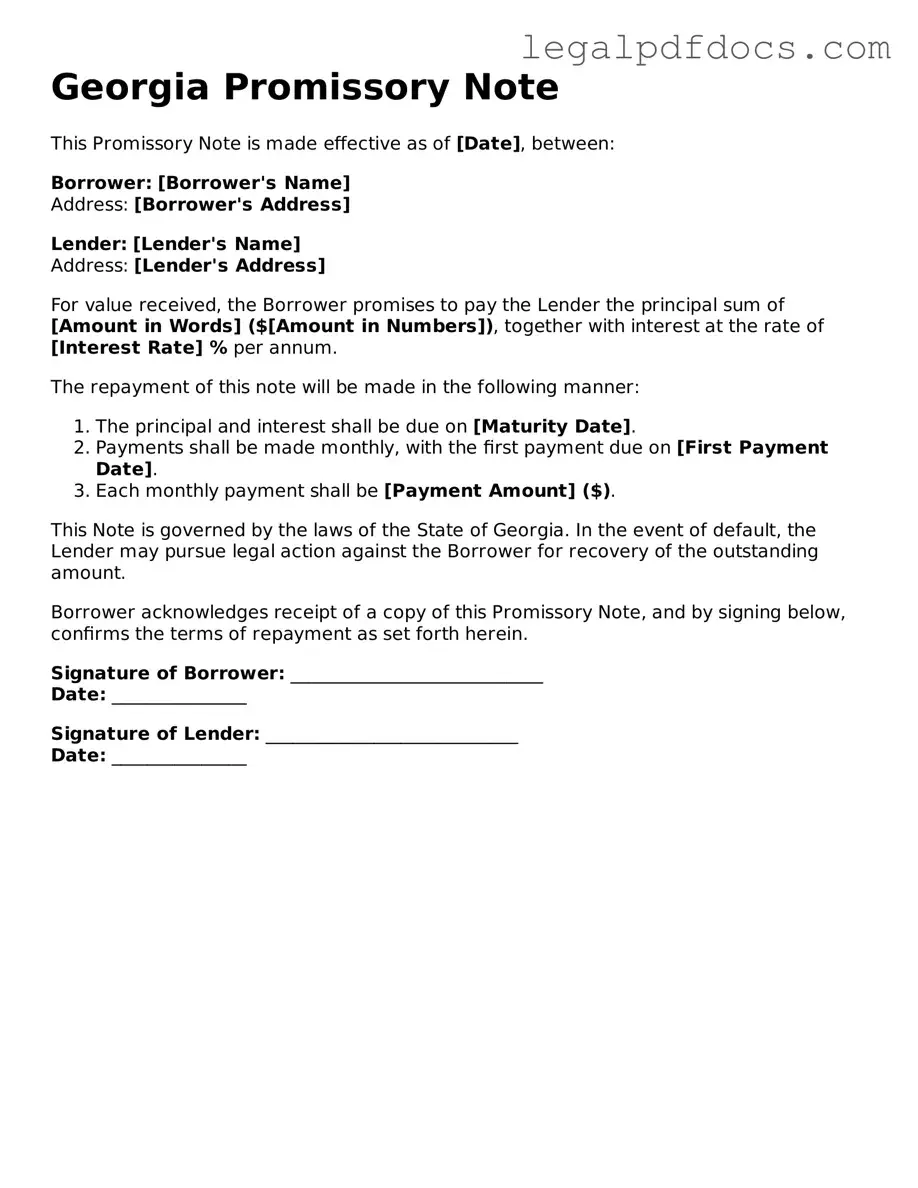The Georgia Promissory Note form serves as a vital document in the realm of lending and borrowing, establishing a clear agreement between a borrower and a lender. This legally binding instrument outlines the terms of the loan, including the principal amount, interest rate, repayment schedule, and any penalties for late payments. It is crucial for both parties to understand their rights and obligations as defined in the note. The form typically includes essential details such as the names and addresses of the borrower and lender, the date of the agreement, and the signatures of both parties, which signify their consent to the terms. Additionally, it may address specific conditions under which the loan can be accelerated or deemed in default, providing further clarity on the consequences of non-compliance. By using the Georgia Promissory Note form, individuals and businesses can ensure that their financial transactions are documented and enforceable, thereby reducing the risk of misunderstandings and disputes down the line.
